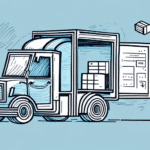Fast Shipping in Ecommerce: A Key Customer Retention Strategy
Ecommerce has revolutionized the way we shop, offering unprecedented convenience and endless options at our fingertips. However, with so many competitors just a click away, businesses must continually find ways to stand out from the crowd. One key strategy for customer retention is fast shipping. In this article, we’ll explore why fast shipping is crucial for ecommerce businesses, the impact it has on customer satisfaction, and how to effectively implement a fast shipping strategy.
Why Fast Shipping is Vital for Ecommerce Businesses
Fast shipping is critical for ecommerce businesses for several reasons. Firstly, it is a key driver of customer satisfaction and loyalty. Customers have come to expect fast and reliable shipping, and businesses that fail to meet these expectations risk losing customers to competitors who can offer more timely delivery. Additionally, fast shipping can help businesses differentiate themselves from their competitors and build a strong brand identity.
Moreover, fast shipping can also lead to increased sales and revenue for ecommerce businesses. Customers are more likely to make repeat purchases from businesses that offer fast shipping, as it provides them with a sense of convenience and reliability. In fact, a study by Statista found that 79% of consumers consider delivery speed to be a crucial factor in their purchasing decisions.
The Impact of Fast Shipping on Customer Satisfaction
Research has consistently shown that fast shipping is directly linked to customer satisfaction. Customers are willing to pay more for faster shipping times, with a McKinsey report indicating that expedited shipping options can significantly enhance the overall shopping experience.
When customers receive their orders quickly and efficiently, they are more likely to leave positive reviews, recommend the business to others, and make repeat purchases. However, it's important to note that fast shipping alone is not enough to guarantee customer satisfaction. Other factors such as product quality, customer service, and ease of returns also play a significant role in shaping the overall customer experience.
Implementing a Fast Shipping Strategy
Optimizing Shipping Logistics
Implementing a fast shipping strategy requires careful planning and execution. Businesses must optimize their shipping logistics by:
- Streamlining warehouse operations
- Partnering with reliable carriers
- Utilizing fulfillment centers strategically located near major customer bases
Setting Realistic Expectations
Businesses must be transparent with their customers about shipping times and set realistic expectations. Offering expedited shipping options and providing tracking information can help improve the overall customer experience.
Leveraging Technology
Utilizing advanced technologies such as automated inventory management systems and real-time tracking can enhance shipping efficiency and accuracy.
The Economics of Fast Shipping: Is It Worth the Cost?
The cost of implementing a fast shipping strategy can vary depending on the size and scale of the business. While there are costs associated with offering expedited shipping options, many businesses find that the benefits outweigh the costs in terms of increased customer satisfaction and retention.
Businesses can often offset the costs of fast shipping by:
- Offering incentives such as free shipping on orders over a certain value
- Bundling multiple products together to reduce shipping costs per item
However, it's important to carefully consider the impact of fast shipping on the bottom line. For smaller businesses or those with lower profit margins, the costs may not always be feasible. Additionally, businesses should consider the environmental impact of expedited shipping, as it often requires more fuel and resources to transport packages quickly.
Innovations in Fast Shipping Technology for Ecommerce
Advances in technology have enabled businesses to offer faster shipping times and more accurate delivery estimates. Some of the notable innovations include:
- Drones and Autonomous Vehicles: Experimenting with drones and autonomous vehicles can make deliveries faster and more efficient.
- Machine Learning Algorithms: Optimizing delivery routes and reducing shipping times through advanced algorithms.
- Blockchain Technology: Improving transparency and traceability in the supply chain, ensuring that products are delivered on time and in good condition. For more information, see the Forbes article on blockchain in supply chains.
Best Practices for Managing Shipping Logistics
Optimizing Warehouse Operations
Efficient warehouse management is crucial for fast shipping. Implementing automated systems and regular inventory audits can help maintain speed and accuracy.
Partnering with Reliable Carriers
Choosing the right shipping partners ensures that deliveries are made on time. It's important to evaluate carrier performance regularly and maintain strong relationships.
Utilizing Fulfillment Centers
Strategically located fulfillment centers can reduce shipping times and costs, especially when serving a geographically diverse customer base.
Effective Communication
Providing customers with tracking information and estimated delivery dates helps manage expectations and reduces inquiries about order status.
Measuring the Impact of Fast Shipping on Customer Retention and Loyalty
Measuring the effectiveness of fast shipping strategies involves analyzing various metrics:
- Shipping Data: Identify patterns and areas for improvement by analyzing delivery times, costs, and failure rates.
- Customer Feedback: Use surveys, reviews, and other feedback channels to gauge customer satisfaction.
- Retention Rates: Track repeat purchase rates to assess the impact of fast shipping on customer loyalty.
Additionally, businesses should weigh the costs against the benefits to determine if fast shipping is a sustainable strategy. Exploring eco-friendly shipping options, such as using electric vehicles or partnering with sustainable shipping companies, can also help reduce environmental impact while maintaining fast delivery times.
Common Mistakes to Avoid When Implementing a Fast Shipping Strategy
Implementing a fast shipping strategy comes with its challenges. Common mistakes include:
- Underestimating Shipping Costs: Failing to account for all expenses can lead to financial strain.
- Poor Communication: Not keeping customers informed about shipping times and delays can damage trust.
- Neglecting Shipping Logistics: Failing to optimize warehouse operations and carrier partnerships can result in inefficiencies.
Avoiding these pitfalls is essential for ensuring the success of a fast shipping strategy.
Case Studies: Successful Fast Shipping Strategies
Several companies have successfully used fast shipping as a customer retention strategy:
- Amazon Prime: Built its entire business model around fast and reliable shipping, offering same-day or two-day delivery on millions of items.
- Zappos: Known for its exceptional customer service and fast shipping times, which have helped increase customer loyalty.
- Nordstrom: Offers expedited shipping options and seamless returns, enhancing the overall customer experience.
The Future of Fast Shipping in Ecommerce: Trends and Predictions
The future of fast shipping in ecommerce is shaped by emerging trends and technological advancements:
- Autonomous Delivery Vehicles: Further adoption of self-driving vehicles for last-mile delivery.
- Same-Day Delivery Expansion: Increasing availability of same-day delivery options in more regions.
- Predictive Analytics: Using data to anticipate demand and optimize shipping logistics proactively.
Staying ahead of these trends will be crucial for businesses aiming to maintain competitive shipping speeds.
Conclusion
Fast shipping is a key customer retention strategy for ecommerce businesses. By offering fast and reliable shipping options, businesses can improve customer satisfaction and loyalty, stand out from their competitors, and build a strong brand identity. While implementing a fast shipping strategy may require upfront investment, many businesses find that the benefits far outweigh the costs. Leveraging technology, optimizing logistics, and maintaining clear communication with customers are essential components of a successful fast shipping strategy.






















